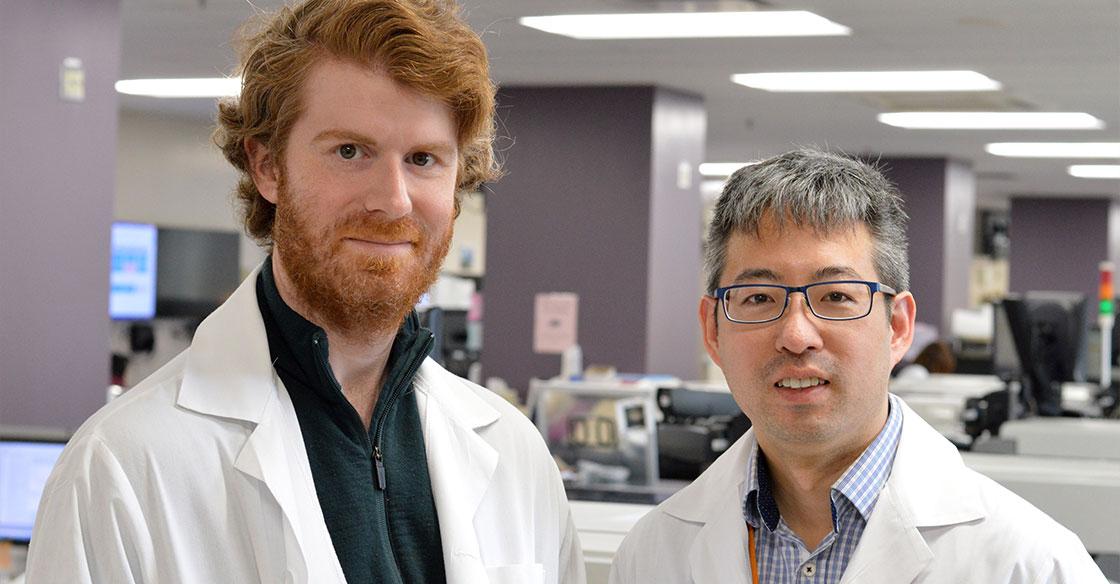
Originally published on qe2times.ca.
Dr. Calvino Cheng and Dr. Jason Quinn have developed an innovative method to dramatically reduce red blood cell product waste at the QEII Health Sciences Centre. Without an adequate supply of the precious resource, patients couldn’t receive surgeries, chemotherapy or blood transfusions.
The QEII hematopathologists found a way to optimize blood ordering for the red blood cell inventory by using data from inpatients at the health centre in a more innovative way.
“We wanted to find a way to help save blood,” says Dr. Cheng, the outgoing medical director of the blood transfusion services at the Nova Scotia Health Authority’s Central Zone in Halifax and medical director of the Pathology Informatics Group.
After noticing that the blood bank was still expiring around two per cent of its red blood cell products, Dr. Cheng and his collaborators developed an algorithm that looks at hemoglobin levels of all admitted patients. It then determines the probability for transfusions in the centre within the next 48 hours, calculates what blood was historically used and then project what will be needed. All of this happens before more red blood cell units are ordered from Canadian Blood Services.
“It is the first time we have used real-time patient data,” says Dr. Cheng. “It is a much closer daily look at what is going on in the health centre.”
“It is very novel. No one does anything like this.” -Dr. Jason Quinn
Now the QEII’s blood bank can keep a correctly-sized inventory of red blood cell products, wasting much less blood. Just over eight units of red blood cells are not used each month because they are too old. This compared to just over 19 units before the algorithm was implemented, according to a recent paper published in Transfusion, the most widely-read journal in its field in the world. By significantly reducing its own inventory, more blood products are freed up and available for other hospitals in the region. The blood used at the QEII is now also fresher. Blood has a shelf life of 42 days.
“Blood is something we have to treat as a valuable asset,” says Dr. Quinn, the incoming medical director of the blood transfusion services. “It isn’t just a resource we make, like a drug. It is actually someone’s blood.”
Dr. Cheng knew the blood bank had to become more efficient after he noticed too many red blood cell products were being thrown out because they were too old for use.
Ordering red blood cells used to be done using a table that looked at average daily usage, explains Dr. Cheng. Technologists would be given a rough estimate of what was needed for a five-day inventory but often the inventory reached as high as a 10-day supply. Now with the algorithm, the estimating is gone and only the correct amount of blood is ordered.
“The algorithm looks forward and backward,” says Dr. Cheng. “This forward-looking part is the unique part.”
Developed in 2015, Dr. Quinn has played a crucial role since then in sharing information about the algorithm and getting studies published.
“We are trying to disseminate this algorithm so that other centres can better use this system,” says Dr. Quinn. “It is very novel. No one does anything like this.”
In 2018, close to 13,800 blood transfusions took place at the QEII thanks in large part to the blood bank’s adequate blood supply. The QEII’s hematopathologists are confident the algorithm will allow doctors and nurses to continue performing their life-saving work and prevent unnecessary waste.
“The bottom line is, it gives us a better ability to deliver blood to patients,” says Dr. Cheng.